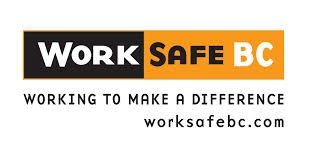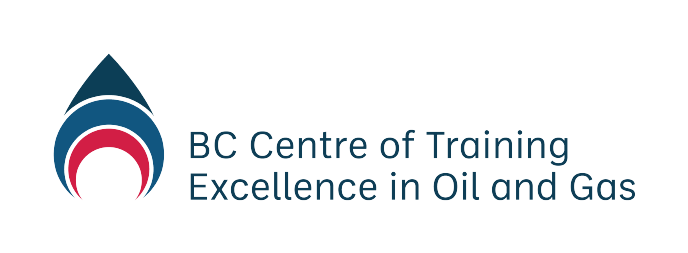-
Module 2.0 How to be Successful in this Course
-
Module 2.1 Introduction to Natural Gas
-
Module 2.2 The Natural Gas Industry in British Columbia
- Overview
- Learning Outcomes
- Natural Gas Science – The Simple Version
- Natural Gas Science – Chemistry
- Natural Gas Science – Physics
- Natural Gas Science – Units of Measurement
- Natural Gas Science – Geology
- Natural Gas Resources and Uses
- Oversight of the Natural Gas Industry
- Understanding Land Rights and Natural Gas
- Energy and the Future
-
Module 2.3 Upstream – Well Site Selection, Preparation and Drilling, Completion, Production, Water Recycling, and Reclamation
- Learning Outcomes
- The Upstream Sector – Extraction and Processing
- The Upstream Sector – Exploration and Site Selection
- The Upstream Sector – Preparation and Drilling
- The Upstream Sector – Completion
- The Upstream Sector – Production
- The Upstream Sector – Water Recycling
- The Upstream Sector – Reclamation
- Upstream Companies and Jobs in British Columbia – Companies
- Upstream Companies and Jobs in British Columbia – Industry Associations
- Upstream Companies and Jobs in British Columbia – Professional Associations
- New Vocabulary
-
Module 2.4 Midstream – Transportation, Processing, Refining
- Learning Outcomes
- The Midstream Sector
- The Midstream Sector – Processing Natural Gas
- The Midstream Sector – Liquefied Natural Gas
- The Midstream Sector – An Emerging Industry
- The Midstream Sector – Processing LNG
- The Midstream Sector – Proposed LNG Projects in British Columbia
- Transportation
- Midstream Companies and Jobs in British Columbia
-
Module 2.5 Downstream – Refining and Markets
-
Module 2.6 Health and Wellness in the Natural Gas Industry
-
Module 2.7 Safety
-
Module 2.8 Terminology and Communication
-
Module 2.9 Jobs and Careers
- Learning Outcomes
- Industry Outlook
- Technology is Changing Workforce and Skills
- Employment in the Natural Gas Industry
- Employment in the Natural Gas Industry – Types of Employment
- Employment in the Natural Gas Industry – Range of Jobs
- Employment in the Natural Gas Industry – High Demand Jobs and Occupations
- Occupational Education and Training
-
Module 3.0 How to be a Valued Employee
-
Module 3.1 Identifying Interests and Skills
-
Module 3.2 Looking for Employment in Natural Gas
-
Module 3.3 Applying for Employment in Natural Gas
WorkSafeBC

Minimum requirements for maintaining workplace health and safety are set and enforced by WorkSafeBC, the organization designated by the provincial government to be responsible for occupational health and safety standards in British Columbia. Employers in the natural gas industry frequently have requirements that go beyond these minimums.
WorkSafeBC’ s website is a valuable and comprehensive source of information for employers and workers.
Website 1: WorkSafeBC
https://www.worksafebc.com/en/resources/health-safety/videos/safety-is-personal
Key documents on WorkSafeBC’s website
There are five key documents workers and employers need to be aware of to understand and meet WorkSafeBC minimum requirements. A hyperlink to the document and a brief explanation of each document are listed below for easy access.
- Workers Compensation Act (WCA):explains the rights and responsibilities of employers and workers with respect to health and safety.
https://www.worksafebc.com/en/law-policy/occupational-health-safety/searchable-ohs-regulation/workers-compensation-act/workers-compensation-act- Check Out Part 3 Occupational Health and Safety
https://www.worksafebc.com/en/law-policy/occupational-health-safety/searchable-ohs-regulation/ohs-regulation/part-03-rights-and-responsibilities - Scroll down to Division 3 and you will see the specific requirements for all employers, workers, supervisors, suppliers, and others.
- Check Out Part 3 Occupational Health and Safety
- Hazardous Products Act Canada (HPA):defines which materials are included in the Workplace Hazardous Materials Information System (WHMIS) and what information suppliers must provide to employers for controlled products used in the workplace.
https://laws-lois.justice.gc.ca/eng/acts/h-3/ - Occupational Health & Safety Regulation (OHS):contains the specific legal requirements that must be met by all workplaces under the jurisdiction of WorkSafeBC.
https://www.worksafebc.com/en/law-policy/occupational-health-safety/occupational-health-safety-regulation - Prevention Manual: contains WorkSafeBC policies with respect to matters under Part 3 of the WCA and Occupational Health and Safety (OHS) regulations.
https://www.worksafebc.com/en/resources/law-policy/prevention-manual/prevention-manual?lang=en - OHS Guidelines: help interpret and provide guidelines on how to comply with OHS regulations and the WCA.
https://www.worksafebc.com/en/law-policy/occupational-health-safety/ohs-guidelines
Check here for WorkSafeBC safety information and links specific to the oil and gas industry.
https://www.worksafebc.com/en/health-safety/industries/oil-gas
Other sources of information about safety
Additional information about safety is available from the following sources:
Website 2: OHS Canada
http://www.ohscanada.com/
- Canada’s online occupational health and safety magazine.
Website 3: Canadian Centre for Occupational Health and Safety
https://www.ccohs.ca/
- Tools and resources to improve workplace health and safety programs.
Website 4: Energy Safety Canada
https://www.energysafetycanada.com/
- A national oil and gas safety association whose goals include zero injuries and zero incidents. The association works side-by-side with industry to drive safe work performance and to get workers home safely.
Learning Activity 5: Creating Your Own Personal Safety Contract
This is an activity to remind you about how important it is to work safely every day. You will write a personal safety contract with yourself to always work safely, regardless of the company, industry, or environment you are working in. Figure 4 provides a sample of a personal safety contract.
Instructions
- Write your own personal safety contract. The contract should be sincere, reasonable, and as detailed as you can make it to achieve your personal safety goals.
- Post your “Personal Safety Contract” where you see it every day before going to work.
Figure 4: Sample Personal Safety Contract color
My Personal Safety Contract
I, Betty Smith promise to follow these steps to personal workplace
safety so that I may always return home to my family at the end of each day.
I promise to:
✓ Attend safety meetings before my shift begins.
✓ Arrive at work with all of my safety equipment in good working order.
✓ Wear my steel toed boots everyday whenever I’m on the job.
✓ Use my eye protection, ear protection and other personal protective equipment EVEN WHEN my co-workers may not.
✓ Immediately report any and all potentially dangerous or hazardous conditions to my supervisor(s).
✓ Take scheduled breaks, so that I do not become overtired or inattentive.
✓ Not drink alcohol, recreational drugs or take any medicines that may make me less alert before or during my shift.
✓ Refuse to do work that is unsafe.
✓ Take on a task that I do not feel trained to do.
✓ Not attend work if I am sick and unfit for work.
Betty Smith
Your Signature Here
